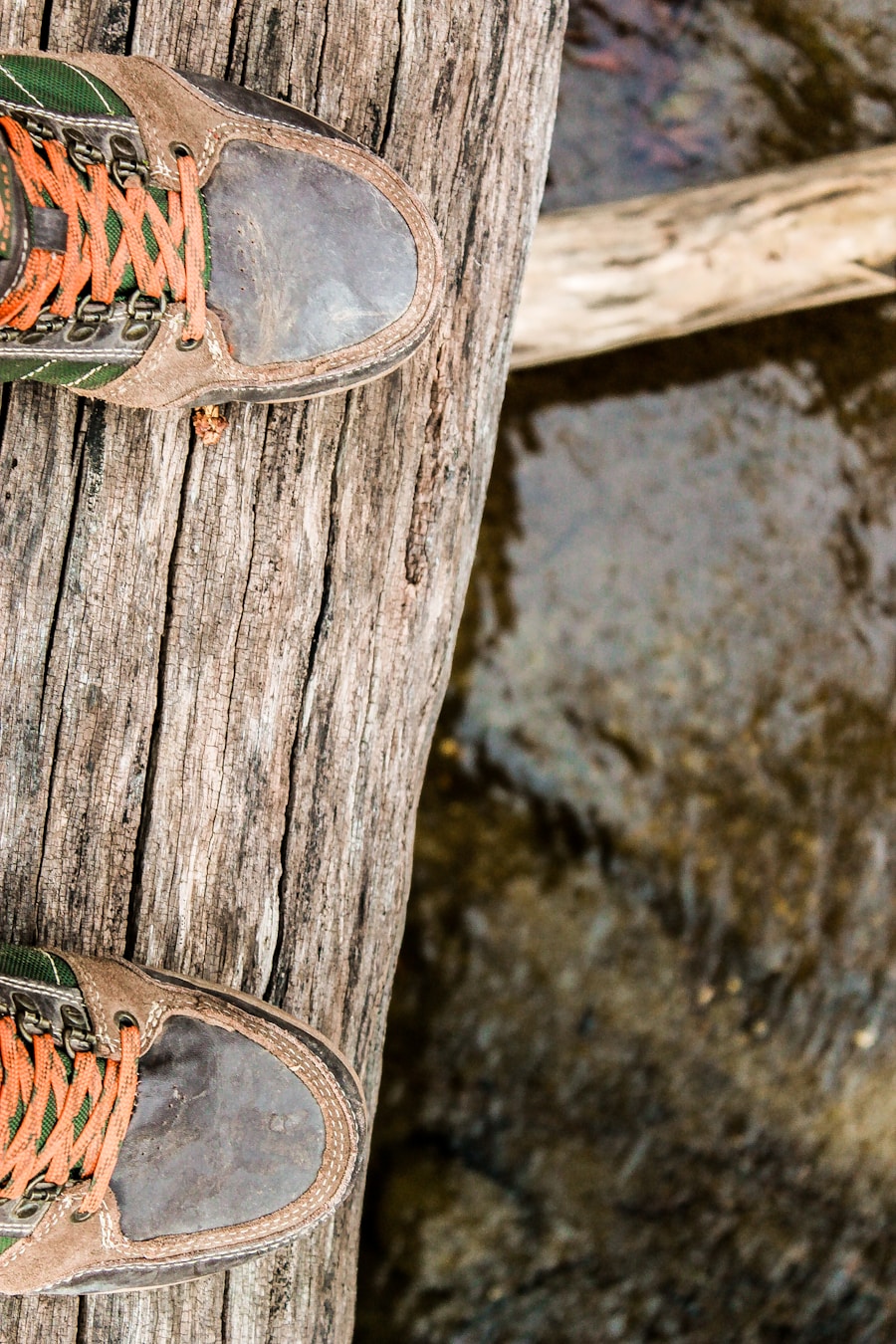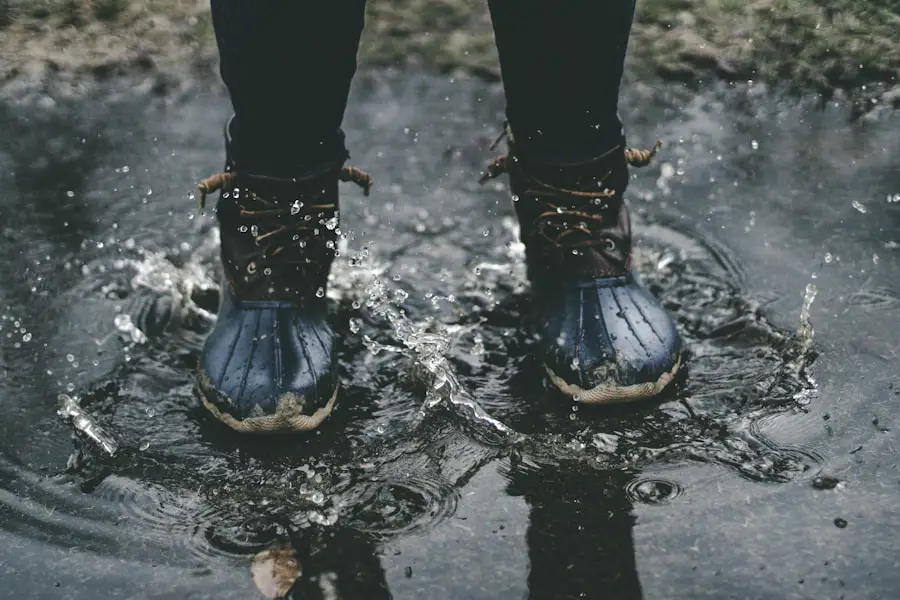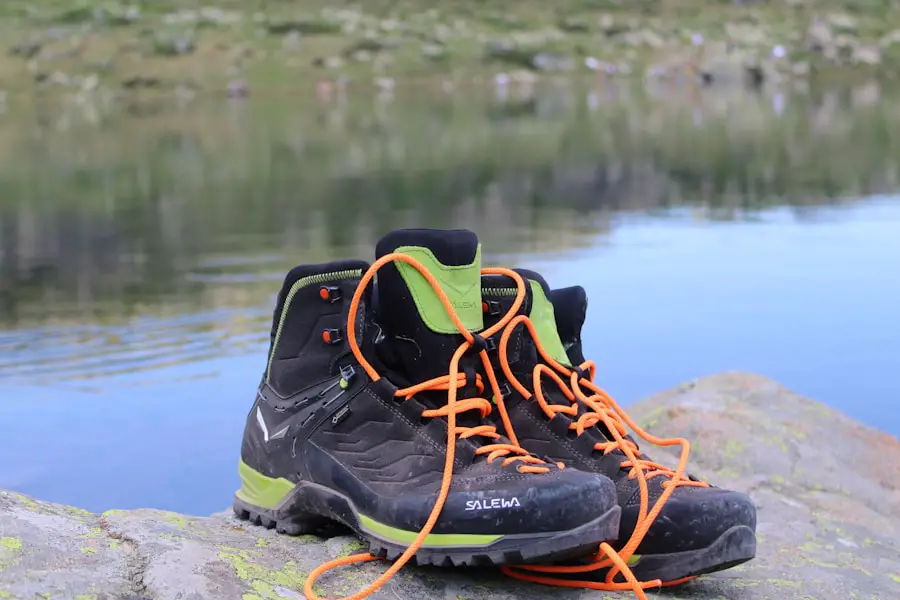Hiking is an exhilarating activity that allows individuals to connect with nature, explore diverse terrains, and enjoy the great outdoors. However, the experience can quickly turn sour if hikers find themselves battling wet and uncomfortable feet due to rain, streams, or muddy trails. This is where the importance of waterproofing hiking shoes comes into play.
Waterproof hiking shoes are designed to keep feet dry and comfortable, which is essential for maintaining overall performance and enjoyment during hikes. When feet remain dry, hikers can focus on the trail ahead rather than the discomfort of soggy socks and blisters. Moreover, waterproofing is not just about comfort; it also plays a crucial role in foot health.
Prolonged exposure to moisture can lead to various foot ailments, including fungal infections and skin irritations. Wet conditions can also increase the risk of slipping and falling, as water can reduce traction on surfaces. Therefore, investing in waterproof hiking shoes is not merely a matter of preference but a necessity for those who wish to engage in hiking safely and effectively.
The right footwear can enhance stability, support, and protection against the elements, allowing hikers to tackle challenging environments with confidence.
Key Takeaways
- Proper waterproofing of hiking shoes is crucial to keep your feet dry and comfortable during outdoor activities.
- There are different types of waterproofing technologies such as Gore-Tex, eVent, and proprietary membranes, each with its own benefits and drawbacks.
- When choosing waterproof hiking shoes, consider factors like the type of terrain, climate, and personal preferences to find the right fit for your needs.
- Regular maintenance and care, including cleaning and reproofing, are essential to prolong the waterproofing effectiveness of hiking shoes.
- DIY waterproofing techniques like using waterproofing sprays and wax can be cost-effective solutions to enhance the waterproofing of hiking shoes.
Types of Waterproofing Technologies for Hiking Shoes
The market for hiking shoes has evolved significantly over the years, leading to the development of various waterproofing technologies that cater to different needs and preferences. One of the most common technologies is Gore-Tex, a breathable membrane that allows moisture vapor to escape while preventing water from entering. This technology is particularly popular among serious hikers and outdoor enthusiasts because it strikes a balance between waterproofing and breathability, ensuring that feet remain dry from both external water sources and internal perspiration.
Another notable technology is eVent, which operates on a similar principle as Gore-Tex but is often praised for its superior breathability. eVent shoes are designed to allow sweat to escape more efficiently, making them an excellent choice for high-intensity activities where foot perspiration can be a concern. Additionally, some brands utilize proprietary waterproofing systems that may include treated leather or synthetic materials designed to repel water while maintaining flexibility and comfort.
These innovations have made it possible for hikers to choose footwear that best suits their specific needs, whether they are traversing wet trails or climbing rocky terrains.
How to Choose the Right Waterproof Hiking Shoes

Selecting the right waterproof hiking shoes involves several considerations that go beyond just looking for a waterproof label.
First and foremost, it is essential to assess the type of hiking one plans to undertake. For instance, day hikes on well-maintained trails may require different footwear than multi-day backpacking trips through rugged terrain.Hikers should consider factors such as the weight of the shoe, the level of ankle support needed, and the type of terrain they will encounter. Lightweight shoes may be suitable for casual hikes, while heavier boots may provide the necessary support for challenging conditions. Fit is another critical aspect when choosing waterproof hiking shoes.
A proper fit ensures comfort and reduces the risk of blisters and other foot injuries. It is advisable to try on shoes with the socks intended for hiking and to walk around in them to gauge comfort levels. Additionally, considering the shoe’s breathability is vital; even waterproof shoes can become uncomfortable if they trap heat and moisture inside.
Hikers should also take into account the shoe’s traction capabilities, especially if they plan to hike on slippery or uneven surfaces. By carefully evaluating these factors, hikers can make informed decisions that enhance their overall experience on the trail.
Proper Maintenance and Care for Waterproof Hiking Shoes
| Aspect | Recommendation |
|---|---|
| Cleaning | Use a soft brush to remove dirt and debris, then clean with a mild soap and water solution. |
| Drying | Air dry your shoes at room temperature, avoid direct heat sources like radiators or sunlight. |
| Waterproofing | Apply a waterproofing treatment regularly to maintain the water repellent properties of the shoes. |
| Storage | Store your shoes in a cool, dry place away from direct sunlight and moisture. |
| Inspection | Regularly check for any signs of wear and tear, and address any issues promptly. |
To ensure that waterproof hiking shoes perform optimally over time, proper maintenance and care are essential. Regular cleaning is a fundamental aspect of shoe care; dirt and debris can compromise the waterproofing capabilities of the materials used in construction. After each hike, it is advisable to remove any mud or dirt using a soft brush or cloth.
For deeper cleaning, a mixture of mild soap and water can be used, but it is crucial to avoid harsh chemicals that could damage the shoe’s materials. In addition to cleaning, reapplying waterproofing treatments periodically can help maintain the shoe’s protective qualities. Many manufacturers recommend specific sprays or waxes designed for their products.
Applying these treatments after cleaning can help restore the shoe’s water-repellent properties. Furthermore, storing hiking shoes properly is vital; they should be kept in a cool, dry place away from direct sunlight when not in use. This practice helps prevent materials from degrading over time and extends the life of the footwear.
DIY Waterproofing Techniques for Hiking Shoes
For those who prefer a hands-on approach or wish to enhance their existing footwear’s waterproof capabilities, several DIY waterproofing techniques can be employed. One popular method involves using beeswax or paraffin wax. By applying a thin layer of wax to leather hiking shoes and then heating it slightly with a hairdryer or heat gun, the wax melts into the leather, creating a water-resistant barrier.
This technique not only improves waterproofing but also conditions the leather, keeping it supple. Another effective DIY method involves using silicone spray or waterproofing agents specifically designed for outdoor gear. These sprays can be applied to both leather and synthetic materials and create a protective layer that repels water.
It is essential to follow the manufacturer’s instructions regarding application frequency and drying times for optimal results. Additionally, some hikers opt for using a combination of these methods for enhanced protection against moisture while ensuring that their shoes remain breathable.
Common Mistakes to Avoid When Waterproofing Hiking Shoes

While waterproofing hiking shoes is crucial for maintaining their performance, several common mistakes can undermine these efforts. One prevalent error is neglecting to clean shoes before applying any waterproofing treatment. Dirt and grime can create barriers that prevent waterproofing agents from adhering properly to the shoe’s surface, leading to ineffective results.
Therefore, always ensure that shoes are thoroughly cleaned and dried before applying any products. Another mistake is over-applying waterproofing treatments. While it may seem logical that more product equals better protection, excessive application can lead to buildup that affects breathability and comfort.
It is essential to follow recommended guidelines regarding how much product to use and how often to reapply it. Additionally, some hikers mistakenly assume that all types of footwear are equally suitable for all conditions; using non-waterproof shoes in wet environments can lead to damage and discomfort that could have been avoided with proper footwear selection.
Tips for Testing the Waterproofing of Hiking Shoes
Testing the waterproofing capabilities of hiking shoes before embarking on a significant hike can save time and discomfort later on. One straightforward method involves performing a simple water test at home. This can be done by pouring a small amount of water over the shoe’s surface and observing how it reacts.
If water beads up and rolls off without soaking into the material, it indicates effective waterproofing. Conversely, if water seeps into the shoe quickly, it may be time to reapply waterproofing treatments or consider investing in new footwear. Another effective way to test waterproofing is by wearing the shoes in controlled wet conditions before heading out on a hike.
This could involve walking through shallow puddles or wet grass while paying attention to how your feet feel inside the shoes. If any moisture penetrates during this test, it may indicate that additional treatment is necessary or that the shoes are no longer suitable for wet conditions. Regular testing not only ensures that footwear remains functional but also helps hikers develop confidence in their gear.
The Benefits of Investing in Waterproof Hiking Shoes
Investing in high-quality waterproof hiking shoes offers numerous benefits that extend beyond mere comfort during hikes. These shoes provide essential protection against moisture while promoting foot health and safety on various terrains. With advancements in technology offering diverse options tailored to different hiking styles and conditions, finding suitable footwear has never been easier.
Moreover, proper maintenance practices ensure that these investments yield long-term benefits, allowing hikers to enjoy countless adventures without worrying about wet feet or compromised performance. By understanding how to choose, care for, and test waterproof hiking shoes effectively, outdoor enthusiasts can enhance their experiences in nature while safeguarding their well-being on every trail they conquer.
If you’re looking to protect your hiking shoes from the elements, you may also be interested in learning about the best ultralight tent for backpacking. Check out this article here for recommendations on lightweight and durable tents to enhance your outdoor adventures.
Love travel? Join Our Facebook Community For More Tips.
FAQs
What are the benefits of waterproofing hiking shoes?
Waterproofing hiking shoes can help keep your feet dry and comfortable in wet conditions, preventing blisters and discomfort. It also helps to protect the shoes from water damage and prolong their lifespan.
How can I waterproof my hiking shoes?
There are various methods to waterproof hiking shoes, including using waterproofing sprays, waxes, or creams specifically designed for outdoor footwear. It’s important to clean the shoes first and follow the manufacturer’s instructions for the best results.
How often should I waterproof my hiking shoes?
The frequency of waterproofing your hiking shoes depends on how often you use them and the conditions you encounter. As a general rule, it’s a good idea to reapply waterproofing treatment every few months or after significant wear and tear.
Can I use regular waterproofing products on my hiking shoes?
It’s best to use waterproofing products specifically designed for outdoor footwear, as they are formulated to withstand the rigors of hiking and outdoor activities. Using regular waterproofing products may not provide the same level of protection and durability.
Are there any downsides to waterproofing hiking shoes?
While waterproofing hiking shoes can be beneficial in wet conditions, it can also reduce breathability and trap moisture inside the shoes, leading to sweaty feet. It’s important to find a balance between waterproofing and breathability for optimal comfort.
